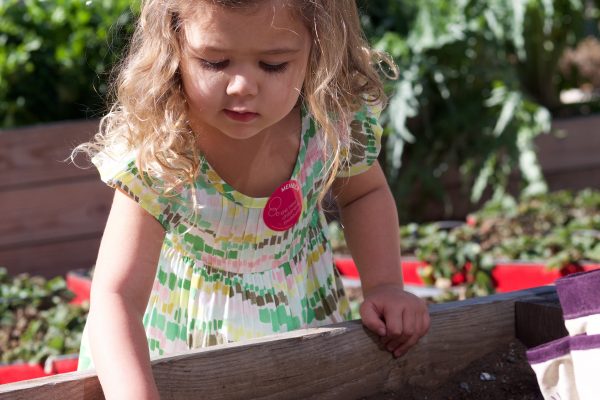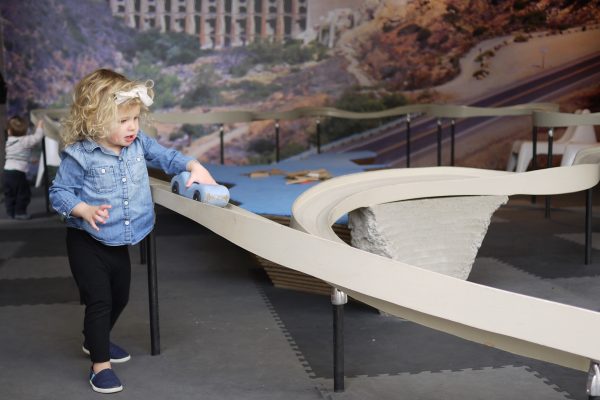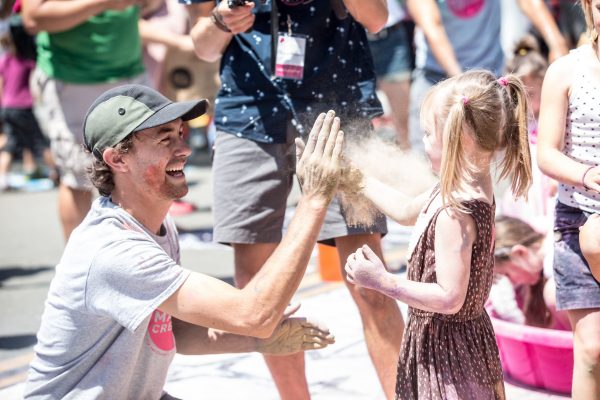do it yourself: foam block printing
In celebration of Earth Month, make your own nature-inspired print using a scratch foam block printing technique! This DIY project is inspired by a workshop in our makerspace, The Rosso Family Foundation Innovators LAB.
Art Vocabulary
- Printmaking: The process of transferring an image from one surface (plate or block) to another (paper or fabric) using ink.
- Negative space: The “empty” areas in an artwork .
- Positive space: The “full” areas in an artwork .
- Texture: The surface quality of materials .
guidelines + materials
AGE: 6+ (with adult support)
TIME FRAME: 60 minutes
SUPPLIES:
- 2 Small foam plates
- Dull pencil
- Foam paint brush
- Acrylic paint or water-soluble block printing ink
- Newspaper or drawing paper
- Scissors
- Ruler
- Marker
directions
1. Create Your Canvas: Take one of the foam plates and draw a rectangle at the center of the plate (the flat part). Then cut out the rectangle and the cut-out piece will act as your canvas, where you will create your design.
2. Draw Your Design. Use the rectangle foam cut-out piece to trace another rectangle on newsprint or drawing paper. Then draw your design within the rectangle on the paper. Think of a design inspired by nature or the Earth. Remember, your design will be mirrored when creating a print, so any written words will have to be written as you would see it in a mirror. If you need help, write the word down and look at it through a mirror. How you see it in the mirror is how it should look as you design it.
3. Trace Your Design. After you’ve drawn your design within the rectangle, cut out the rectangle. Place your rectangle paper design over your foam cut-out, and using a dull pencil, trace your design onto the foam piece. As you drag the dull pencil over your design, the tip of the pencil will press the foam down leaving an imprint of your design on the foam.
4. Paint Your Foam Design. Use the other foam plate as a palette and pour out a quarter size of acrylic paint or water-soluble block printing ink for each color you want to use. Then use the foam brush to lightly apply the paint to your foam rectangle design. Make sure not to put on too much so your design doesn’t disappear.
5. Make Your Print. To make a print, take your painted foam piece and press it firmly down (paint side down) onto another piece of blank drawing paper. Be sure to press evenly across the foam piece so all the paint transfers to your paper. Peel back the piece of foam and see your print! You can use the same foam piece repeatedly with different paint colors. Share your print with others and why you chose the design.
History of Printmaking Facts
- The oldest technique is woodcut/woodblock printing used for printing fabrics – invented in China around 200 AD and reached Europe by the 1300s.
- Prints made using clay tablets had been developed in India by the 6th century.
- Once paper became readily available in Europe around 1400, religious images and playing cards were among the first paper items printed .
- By the 1500s, movable type technology allowed for mass production of books and newspapers .
- As block printing technology progressed, printing plates could be made of wood, metal, stone, linoleum or foam. With the rise of new techniques, printmakers took on a much wider array of subject matter, moving away from just cloth prints and religious materials towards the varied practice it is today.



